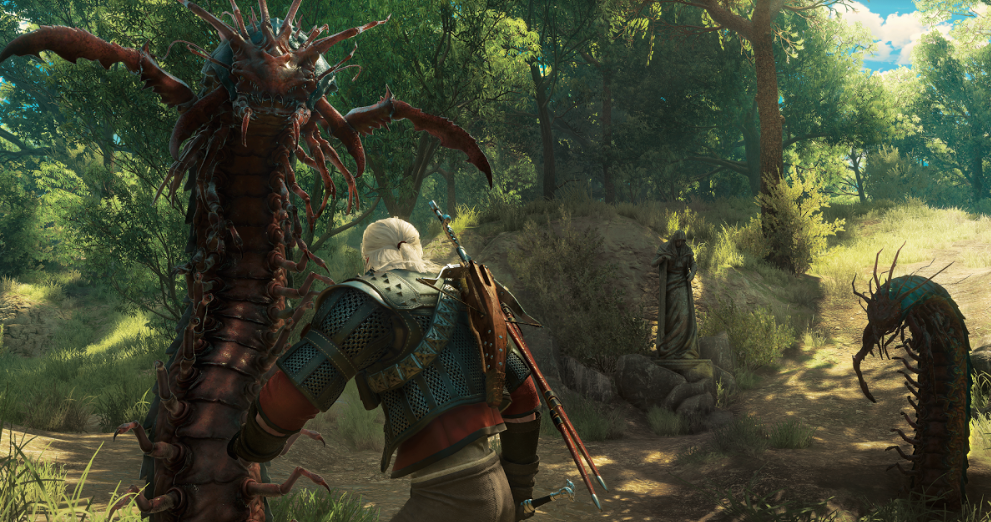
Continued...
The audio experience achieved by CD Projekt Red in The Witcher 3: Wild Hunt was surreal. The music in this game is an immersive story of its own, while the level of attention to detail with every consideration ensures that every sound participates in transporting the gamer into a mystical world and captivates them entirely so that the lines between reality and game are ever so blurred.
During Audiokinetic's Wwise Tour, the CD Projekt Red audio team presented their work.
- Krzysztof Lipka – Sound Team Coordinator
- Paweł Daudzward – Sr. Sound Designer
- Marcin Przybyłowicz – Music Director / Composer
- Colin Walder – St. Audio Programmer
The consideration, successes, and lessons learnt are demonstrated in a series of very educational Wwise Tour videos from the event. If you didn't get the chance to see the first set of videos, we recommend that you check out The Witcher 3: Wild Hunt - Game Audio (part 1/2).
Combat: Global Approach
In this video, Krzysztof describes how they crafted believable combat sounds for their 67 monsters, with a handcrafted but fast paced, and a little bit of a dirty approach. While recording sword sounds from real life, they had discovered that they were relatively dull sounds. This may have had an influence in regards to building up their enthusiasm towards creating highly detailed combat sounds.
Switches were used in abundance for their combat system, allowing them to identify:
- Who’s using the weapon
- What armor type is hitting the weapon
- What type of attack it is
- What location is being hit , and so on.
When they previewed their Wwise project in this part of the presentation, it was very apparent that their content was very organized, detailed, and structured.
Music: General Approach
Marcin presents a general overview of the decision process involved before adopting Wwise for The Witcher 3: Wild Hunt.
From here, he takes us through the team’s general approach when it came to music. Despite the non-linear nature of the game, in order for the music to become an integral part of the storytelling, they had to consider bonding the music with a narrative layer. They, therefore, decided that the music needed to be perceived as a linear experience for the player.
Technically, the music uses a mix of States and Switches. These States control day/night cycles, generic combat, and Gwent tracks, while the Switches control dialogue music, cut-scene cues, custom gameplay, and boss combats. RTPC’s are also used for exploration vs. threat music.
Marcin explains why about 95% of the tracks use the same key signature, before he plays pieces of music while soloing certain stems and diving deeper into the details of the many music systems that were implemented.
Music: Action Sync
Colin describes how they implemented the various cues that the music system needed using scripts, volume triggers, and player vs. enemy levels. Using bar and beat music callbacks from Wwise, they were able to convince the team to experiment with synchronizing enemy attack moves to the music's beat. You can watch this particular system in action here, and it is quite impressive!
Audiokinetic wishes to thank CD Projekt Red and everyone on The Witcher 3: Wild Hunt team. Thank you for assembling this fascinating educational presentation and sharing it with the Wwise and interactive audio community. Game audio at its finest, these series of Wwise Tour videos are a must watch. We hope you enjoyed them and that you will want to share them with your fellow game audio peers!


コメント